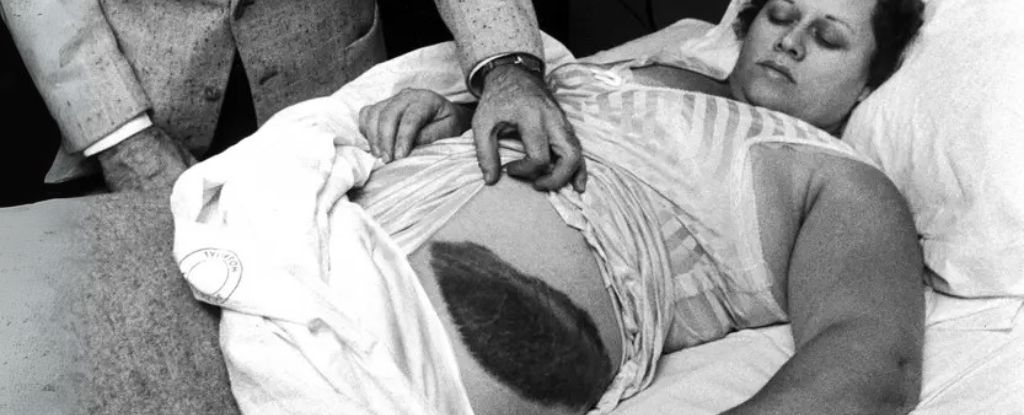
On November 30, 1954, Ann Hodges of Sylacauga, Alabama, became the first documented person to be struck by a meteorite. While taking an afternoon nap, a meteorite crashed through her home, leaving her with a bruised hip. This extraordinary event not only altered her life but also captured the imagination of many, becoming a topic of fascination for over 70 years.
The meteorite that struck Hodges is known as the Sylacauga meteorite, weighing approximately 8.5 pounds. It is classified as a chondrite, a type of stony meteorite rich in iron and nickel. Researchers estimate that the meteorite formed around 4.56 billion years ago, making it older than the Earth itself. The fragment that struck Hodges likely broke off from the asteroid 1685 Toro, categorized by NASA as a “Near Earth Asteroid.”
Witnesses reported seeing a bright streak in the sky that afternoon, prompting many in the town to call emergency services. Local media, including the Decatur Daily, noted that residents initially feared they were witnessing a plane crash. At the time, Hodges lived in a rented house across from the Comet Drive-In Theater, which featured a neon sign depicting a comet in the sky.
At 14:46, a piece of the meteorite crashed through the roof of Hodges’ home, ricocheting off a radio before striking her on the hip. Her mother, hearing her screams, rushed to her side, but neither knew the cause of the commotion. Hodges was taken to the hospital, not for severe injuries but due to her distress over the incident. As noted by Mary Beth Prondzinski from the Alabama Museum of Natural History, “She was a very nervous person, and she didn’t like all the notoriety or all the people around.”
The impact left a bruise the size of a grapefruit on Hodges’ hip, and soon, news of the meteorite strike spread throughout the community. Neighbors, law enforcement, and even Mayor Ed Howard converged on her home to witness the aftermath. The local doctor and police chief discovered the hole in the ceiling from which the meteorite had descended.
After the event, the meteorite was confiscated by the Air Force for examination, as officials initially suspected it might be something other than a meteorite. Once its true nature was confirmed, a complex legal battle ensued over its ownership. The landlord, Birdie Guy, claimed the meteorite belonged to her since it had landed in her property. Ultimately, the dispute was settled for $500.
Hodges became an overnight sensation, appearing on television shows and receiving fan mail from people intrigued by her story. Despite the attention, she preferred to maintain her privacy and left her lawyer to handle correspondence. Eventually, she donated the meteorite to the Alabama Museum of Natural History, citing her desire to distance herself from the fame it brought her.
The meteorite’s legacy continued to influence her personal life, contributing to tensions in her marriage with Eugene Hodges, who saw commercial potential in the rock. The couple divorced in 1964. Ann Hodges passed away in a nursing home in 1972 at the age of 52 due to kidney failure.
In recent months, another meteorite incident in McDonough, Georgia, sparked renewed interest in Hodges’ story. A man narrowly escaped being struck when fragments of a meteorite penetrated his roof, missing him by just 14 feet. The meteorite pieces were also determined to be approximately 4.56 billion years old.
According to astronomy experts, the likelihood of a person being hit by a meteorite is remarkably low. Michael Reynolds, an astronomer at Florida State College, stated, “You have a better chance of getting hit by a tornado, a bolt of lightning, and a hurricane all at the same time.” This rarity underlines the significance of Hodges’ experience, which remains a captivating chapter in both scientific and popular culture.
As time passes, the story of Ann Hodges continues to inspire interest, and many have approached the Alabama Museum of Natural History with ideas for adaptations in various forms of media. The enduring allure of her tale reflects humanity’s fascination with the cosmos and the extraordinary events that occasionally intersect with daily life.






